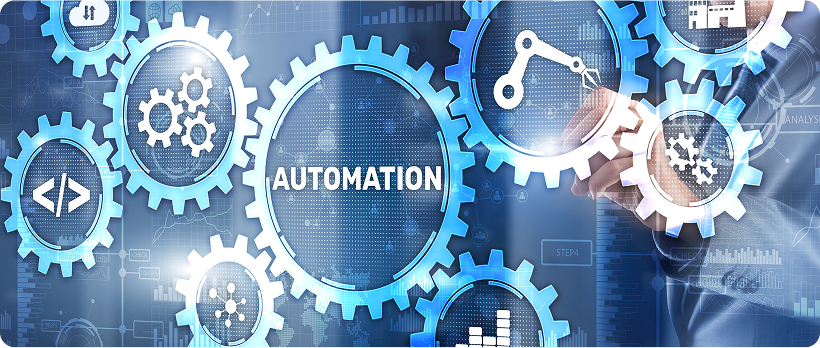
Imagine trying to win a race while dragging an anchor behind you. Sounds impossible, right? That’s exactly what it feels like for businesses still running on outdated legacy systems.
While the world races ahead with AI, automation, and real-time everything, many organizations are stuck relying on old software that can’t keep up. These legacy systems may have served you well once, but now they’re holding back growth, innovation, and agility.
So, why modernize legacy systems now?
In this blog, we’ll walk you through what legacy systems are, why modernization is essential today, when to take the leap, and how to do it right. If you’re serious about staying competitive and future-ready, this guide is for you.
What Is a Legacy System?
A legacy system is basically any old software, hardware, or IT setup that your business still relies on, even though it’s long past its prime. These systems were often built years (sometimes decades) ago using outdated technologies, like COBOL, and they tend to run on aging hardware or exist in isolated silos.
They might have been solid workhorses back in the day, but now they’re more of a burden, slowing things down, making integration difficult, and struggling to keep up with today’s performance and security standards. In short, what was once the backbone of your business is now starting to feel like dead weight.
Why Is Modernization Crucial Today?
Technology is moving at lightning speed, and businesses that cling to outdated systems are finding it harder to keep up. Upgrading isn’t just about getting the latest tech, it’s about making a smart, strategic shift that sets your company up for long-term success. In fact, Gartner reports that over 60% of CIOs now list legacy system modernization as a top priority, and it’s easy to see why.
Here’s the reality:
- Old systems are tough (and costly) to maintain.
- They come with serious security risks.
- They don’t play nice with cloud platforms, AI, or modern APIs.
- Worst of all? They block your ability to innovate and adapt.
Whether you’re in banking, healthcare, manufacturing, or retail, modern systems are no longer a luxury; they’re essential.

Why Modernize Legacy Systems? 8 Powerful Reasons That Matter
Let’s dive deeper into the specific reasons why companies are taking the leap.
1. Enable AI and Smart Features
Legacy systems can’t support AI, but modern ones can.
If you’re looking to implement:
- Predictive analytics
- Chatbots and virtual assistants
- Fraud detection or process automation
You need systems that support AI and machine learning out of the box. Modern platforms give you that foundation.
2. Boost Performance and Speed
Old systems = slow, unreliable, and frustrating.
Modern systems are:
- Faster
- More stable
- Cloud-ready for better performance under heavy load
And remember, speed isn’t just technical. It directly affects your user experience.
3. Strengthen Data Security
Legacy tech wasn’t built for today’s cyber threats.
Risks include:
- Lack of encryption
- No multi-factor authentication
- Weak compliance with standards like GDPR or HIPAA
Modern systems offer built-in, up-to-date security layers that protect both your business and your customers.
4. Integrate Seamlessly with Modern Tools
Legacy systems don’t play well with others.
Connecting with CRMs, ERPs, analytics tools, or IoT devices often requires:
- Custom development
- Workarounds that break easily
Modern platforms are designed for integration, API-ready and cloud-compatible from day one.
5. Scale and Grow Without Limits
Your business is growing, your system should, too.
Modern architectures (like microservices and containers) allow for:
- On-demand scaling
- Easy deployment of new features
- Adaptability for future needs
No more worrying about hitting system limits.
6. Cut Down Long-Term Costs
Legacy systems are more expensive than you think.
Ongoing costs come from:
- High maintenance and support
- Dependency on outdated tech or vendors
- Difficulty in finding developers with legacy skillsets
Modernization reduces total cost of ownership (TCO) over time and increases ROI.
7. Stay Compliant with Industry Regulations
Compliance isn’t optional, and legacy systems fall short.
Modern systems help you meet standards like:
- GDPR
- HIPAA
- PCI DSS
They offer features like audit logs, access control, and automated reporting to keep you on the right side of regulations.
8. Improve the User Experience
Clunky, outdated interfaces frustrate users, inside and out.
Legacy UX often leads to:
- Low employee productivity
- Higher error rates
- Poor customer satisfaction
Modern systems are intuitive, mobile-friendly, and designed with real users in mind.

When Should You Modernize Your Legacy System?
Timing is everything. So, when to modernize?
Here are signs it’s time:
- You’re spending more time fixing than building.
- Updates take weeks or months.
- Employees use workarounds or manual processes.
- You face security audits or compliance gaps.
- Customers complain about your service speed or UX.
- Integration with third-party apps is a constant headache.
If you’ve checked even two of these boxes, it’s time to seriously explore legacy modernization.
iTech’s Legacy Modernization Strategies – What Are Your Options?
Modernization is not a one-size-fits-all approach. At iTech, we tailor the strategy to your systems, goals, and industry needs. Here’s how:
Encapsulation – Modern Interfaces, Same Core
Encapsulation gives your old system a fresh new look, without touching the core code. By wrapping legacy functionalities into microservices or exposing them via APIs, we make it easier to integrate your software with modern apps, UIs, and cloud tools.
This approach works well when you need quick wins like better interfaces or limited integration, but keep in mind, the deeper issues like high maintenance or legacy code complexity still remain.
Rebuilding – Modern Tech, Same Purpose
Rebuilding involves completely rewriting your legacy system from the ground up using modern technologies while keeping the original functionality and business logic.
It’s a time- and resource-intensive strategy, but the payoff is big, you get a cloud-ready, secure, and scalable system that’s tailored for your current and future needs. Rebuilding is ideal when your old system is too rigid, insecure, or unable to support integration.
Replatforming – Modern Platform, Minimal Disruption
Think of replatforming as a slightly smarter upgrade. You move your system to a new runtime platform like AWS or Azure and make minor code tweaks to ensure compatibility.
This keeps your core business logic intact while improving scalability and performance. Teams can continue using the software without retraining, making this a smooth transition strategy with noticeable gains.
Rehosting – Move to the Cloud, As-Is
Rehosting is the fastest, most cost-effective way to modernize. Often called “lift and shift,” this approach moves your existing system from on-premises to a cloud infrastructure with zero code changes. You keep everything as it is, dashboards, logic, workflows just on a more scalable and reliable platform.
Ideal when time is tight and you need to reduce infrastructure costs quickly, rehosting helps unlock some benefits of the cloud, though advanced cloud features might still be out of reach.
Rearchitecting – Redesign for Innovation
When parts of your system need a deeper transformation, rearchitecting offers a balanced approach. We break your system into logical layers and selectively recode or upgrade components, especially those related to performance, scalability, or security, while preserving others that still work fine.
Whether you’re trying to address performance bottlenecks, modernize data handling, or improve integrations, rearchitecting helps you unlock real innovation without starting from scratch.
Retain the Existing System – Hold Off, but Stay Prepared
Sometimes, modernization isn’t the immediate priority. Maybe your company is preparing for a merger, awaiting a leadership change, or evaluating long-term direction. In such cases, retaining the existing system might make sense, for now.
However, delaying modernization comes with risks. The longer you wait, the harder (and costlier) it becomes to make the leap later. iTech helps clients assess whether retention is a viable short-term solution while planning for a more future-ready architecture when the time is right.
Replacing/Retiring – Out with the Old, In with the Smart
Sometimes, the best solution is to retire the legacy system entirely, especially when your business model has changed or the software no longer aligns with current workflows or compliance standards.
In this case, we help you migrate to a new custom-built solution or a third-party cloud-based system that fits your evolving needs. This is a clean break, so we carefully manage data migration, user training, and system onboarding to ensure a seamless transition.

Challenges You Might Face During Modernization
Modernizing legacy systems isn’t without its hurdles. Here are common roadblocks, and how to handle them.
Moving Old Data
Old systems often store data in messy or outdated formats, which makes it tricky to transfer everything to a new system without losing or corrupting anything.
How to handle it: Before you start, create a clear plan to clean up and organize your data. This will make the migration smoother and more accurate.
Risk of Downtime
Even a short system shutdown can affect your daily operations. That’s a big concern when you’re upgrading something your business relies on every day.
How to handle it: Roll out the new system in phases, test it in a safe environment first, and consider running both old and new systems together for a while until you’re confident everything works.
Helping Employees Adapt
People get used to old systems, even if they’re outdated. Switching to something new can feel confusing or frustrating, especially if they don’t understand why it’s happening.
How to handle it: Offer clear, hands-on training based on each person’s role. Get a few “super users” who can help others, and ask for regular feedback so you can improve the experience as you go.
How Low-Code Speeds Up Legacy Upgrades?
One of the most transformative trends in modernization today is the rise of low-code platforms.
What is Low-Code Modernization?
Low-code platforms enable you to build or upgrade applications with minimal hand-coding, using visual workflows and drag-and-drop tools.
Benefits:
- Accelerated development cycles (up to 5x faster)
- Lower IT dependency for routine tasks
- Rapid prototyping and iterative testing
- Integration-ready with APIs and cloud services
Choose iTech for Secure, Scalable Legacy System Upgrades
At iTech, we understand that legacy modernization is more than a technical decision, it’s a business imperative.
We bring:
- Proven experience in ERP and custom software modernization
- Expertise in rehosting, refactoring, and low-code platforms
- Zero-downtime migration methodologies
- End-to-end compliance, security, and post-launch support
Our solutions are built for performance, scale, and future-readiness.
Conclusion: The Future Won’t Wait, And Neither Should You
Legacy systems had their time, but today’s business world moves faster than ever. It’s no longer enough for your technology to “get the job done.” You need systems that can adapt, scale, and support innovation at every turn.
Modernization isn’t just a tech refresh, it’s a smart investment in your company’s future. Whether it’s through rehosting, refactoring, or embracing low-code platforms, taking the right steps now can unlock better performance, stronger security, and a seamless user experience.
The tools are ready. The benefits are clear. The opportunity is yours to take.
Ready to start your modernization journey?
Let’s talk about how we can transform your legacy systems into future-ready solutions. Contact Us today to get started
FAQs
What does modernizing a legacy system mean?
It means updating or replacing outdated systems with modern architectures and technologies to improve performance, security, integration, and scalability.
When is the best time to upgrade old software?
When your system shows signs of poor performance, security gaps, integration issues, or high maintenance costs. It’s also ideal to modernize before regulatory audits or digital transformation projects.
What Is Low-Code Modernization?
It’s a method of upgrading systems using low-code platforms that require minimal manual coding. This approach enables rapid development and easier maintenance.
What’s the difference between rehosting and refactoring?
Rehosting is moving an application to a new environment without changing its code. Refactoring involves modifying the code structure to improve functionality without altering its core behavior.
How much does legacy system modernization cost?
Costs vary based on system complexity, chosen strategy, and scope. It can range from thousands to millions, but long-term ROI usually outweighs the initial investment.










